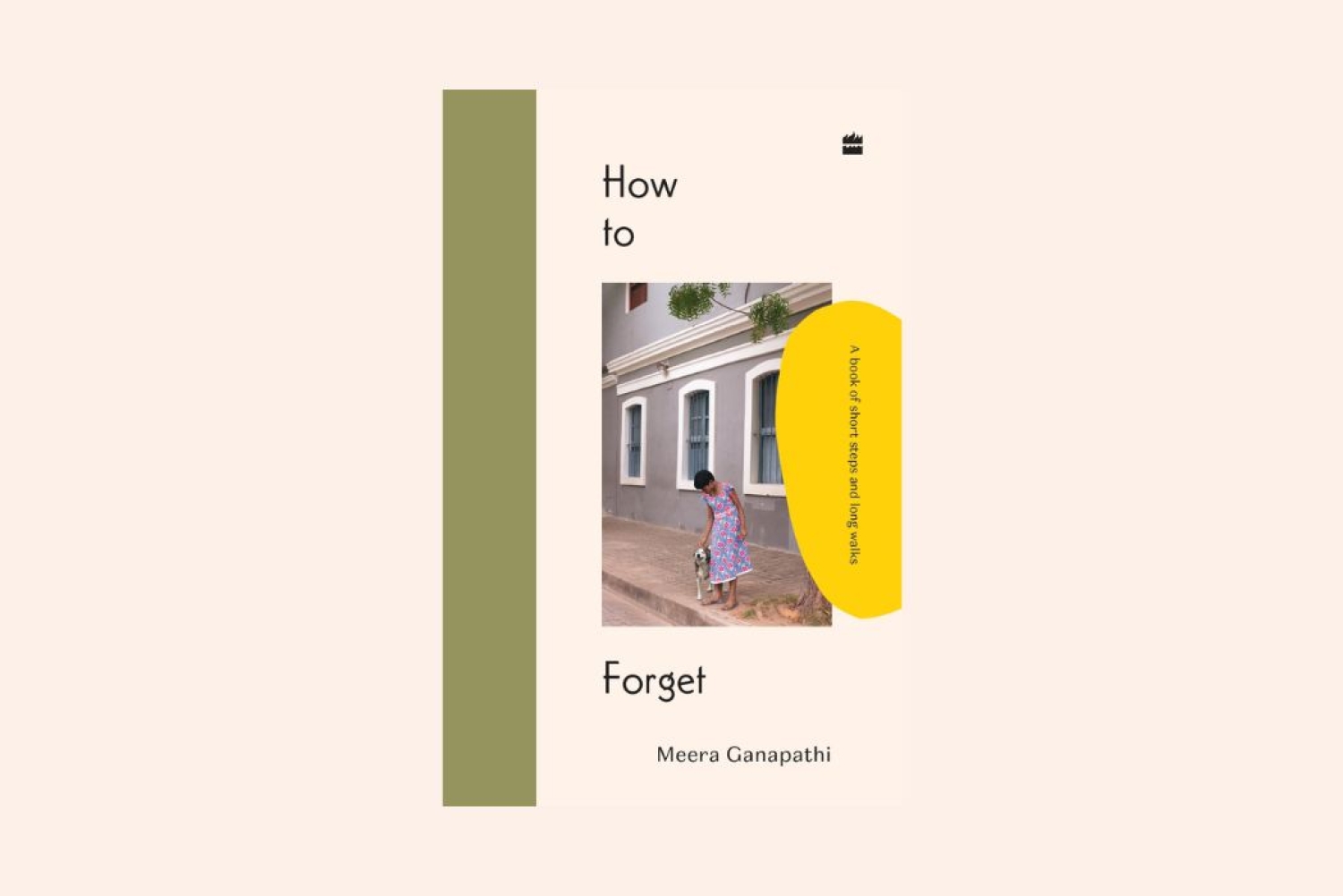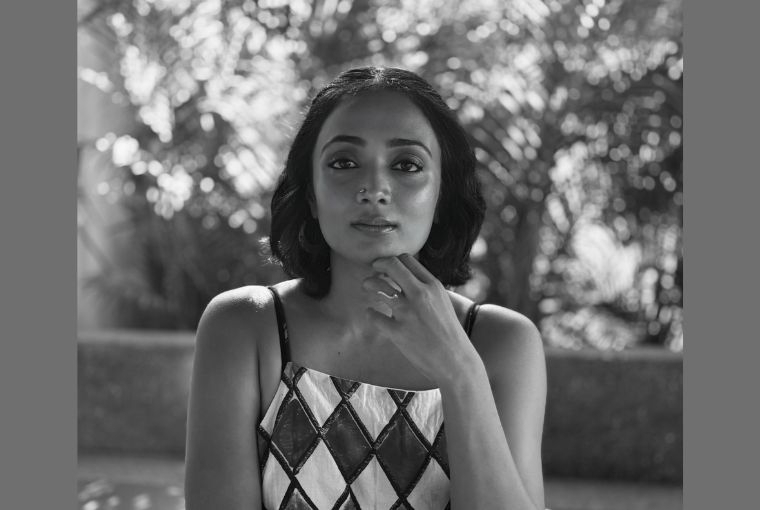

The buzz around books on personal detail in literary communities around the world has been noteworthy, as of late. While readers still like to populate their shelves with literary fiction, we’ve all felt a growing need to have windows to other people’s lives. These windows coax our sadnesses, feed our joys and remind us that there is always someone who has felt what we are feeling, long before us. The genre has come to be associated with a certain undoing of urban loneliness, and has enabled us to connect with each other better. How to Forget: A Book of Short Steps and Long Walks, published by Harper Collins India, written by Meera Ganapathi, combines poetry and prose, and tells a story of childhood, love and longing through the very simple act of walking. We’re in conversation with Meera Ganapathi, the author of How to Forget on writing, loss and tenderness.
The title How to Forget suggests memory, loss, and perhaps even a method of survival. What does “forgetting” mean in the context of this story? And was that always the title?
How to Forget takes its title from a poem in the book that gathers the dizzying details of walking in Bombay - orange haired men, glue-eyed children, mosques and temples in the sea, SRK in his balcony, finally ending in a patchwork of sunsets. While the poem comments on the therapeutic aspect of walking (a chance to step outside of the mind into the preoccupations of living), it also encapsulates the book which is centred around memory - the desire to forget and the need to remember. It wasn’t always the title, I also considered ‘Rosa keeps a leaf’, but ultimately, the book is about how our walks carry the passage of time, and so, ‘How to Forget’ felt right.
What has been your experience in striking a balance between tenderness and pain in your writing?
I haven’t consciously tried to strike a balance. Maybe it’s only eventual, but tenderness quite naturally follows loss and pain. Nick Cave says it well when he talks about holding onto hope. He says, “It took a devastation to reveal the precariousness of the world, of its very soul, to understand that it was crying out for help. It took devastation to understand the idea of mortal value, and it took devastation to find hope.” I do feel that once you have experienced pain you find yourself committed to softness - be it in the form of tenderness or hope, and this is an act of survival and bravery because it is the only way to go on.
Family, nostalgia, and the inner lives of women seem to play a strong role in your storytelling. What drew you to explore these themes in the way that you have?
I feel deeply connected to something Louis Gluck said, “We look at the world once in childhood, the rest is memory.” All my life I have tried to piece together the details of what I don’t know and what I have come to believe. My mother was never truly known to me and I have tried to find her in photos, in conversations of family members, in things she has owned and I have never really found her. I am beginning to realise that the themes I write about are nostalgic as a sense of seeking, I want confirmation and reassurance but I am unlikely to find it, so I work it out through writing. Besides this, women also show up through the impressions they have left on me, I was raised by strong women and I feel a certain longing for the things they may have missed simply because of the time they lived in - and through my writing I feel the need to set it right.
Most memoirs on memory wrestle with remembering and letting go. Did writing it teach you anything new about grief or closure?
The book contains a lot of personal detail, but I don’t think of it as a memoir as it also contains the experiences of the people known to me. The characters are sometimes a composite of three or four people and are sometimes direct accounts from others. But even though this isn’t a memoir, the book did give me strength to confront my past without guilt or shame. Revealing certain details of one’s childhood can feel complicated for those who have been adopted or faced an early or unresolved bereavement. But it also makes you come to terms with the undeniable reality of these events shaping who you are and who you’ve become. Besides, I got pregnant while writing the book and I had to simultaneously confront the future. I can’t say I have found closure or found anything new about grief - I have only learnt to live easier with these things.

Your background in running The Soup has given you a sharp eye for modern Indian culture. Did that sensibility shape this novel in any way?
Absolutely. Soup has been the most enriching experience of my life as a writer. It gave me the opportunity to become a temporary but very invested confidant, as a person recording the details of others’ lives. Personal histories are often disregarded in the larger documentation of time, so I feel good knowing that Soup is now an archive of personal accounts that reflect migration, feminism, food and even civic spaces. A small part of this book is in fact material from a story about ‘women exercising in public spaces,’ and from a photo story called ‘best friends.’ The personal accounts of the people we came across, the places I walked in or heard about, were some of the places I went back to. Besides, I have always tried to incorporate photography and writing as companions in storytelling by working with a few excellent photographers on subjects that intrigued me - from hair and city spaces to the language of flowers. In this book I found myself gathering material for research and poems in photos, almost as a habit and eventually I found the need to use these photos in their grainy, amateurish, unassuming form to also speak of the walks I went on. A very special contribution of Soup is the book cover, which has a photo by a talented photographer Priyadarshini Ravichandran - a person I frequently collaborated with on Soup. Her work has always felt familiar, like a life I’ve also lived, and I’m so glad her photo is on the cover.
What were some of your literary influences in putting this book together?
I began with the idea of reading everything available on walking but the process began to wear me down into some disillusionment about how none of this felt achievable or particularly attuned to me. Nonetheless I am glad I read Windswept - Why Women Walk by Annabel Abbs, I re-read Mrs Dalloway, A Field Guide to Getting Lost by Rebecca Solnit, Why Loiter? By Shilpa Phadke, An Attempt at Exhausting a Place in Paris by Georges Perec (this became my favourite book on the subject). I was about to begin Walking on Ice by Werner Herzog and then I decided to just pause and reflect on what I wanted to write about. So I returned to poetry and art - a zine I found in an Airbnb that was really cheeky in its form - irreverent and wildly put together, Dayanita Singh’s Let’s See, a bit of Annie Ernaux, Alexander Chee’s How to Write an Autobiographical Novel, Vikram Seth’s All Those Who Sleep Tonight, a lot of my favourite poet Jeet Thayil and Necklace of Skulls by Eunice D'souza. I lost my beloved black cat Flea, bang in the middle of the book, at two months pregnant which was an incredible blow to me and I couldn’t work or read and buried myself in various Sebastian Barry novels which mirrored some suppressed sadness and probably influenced something or the other, I can’t be sure what.
What do you hope readers carry with them after finishing How to Forget?
I hope they find something of themselves in the book.
Words Neeraja Sreenivasan
2.07.2025